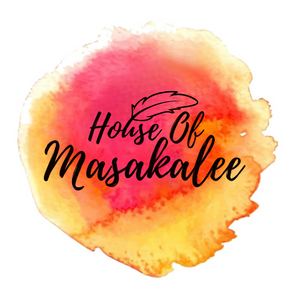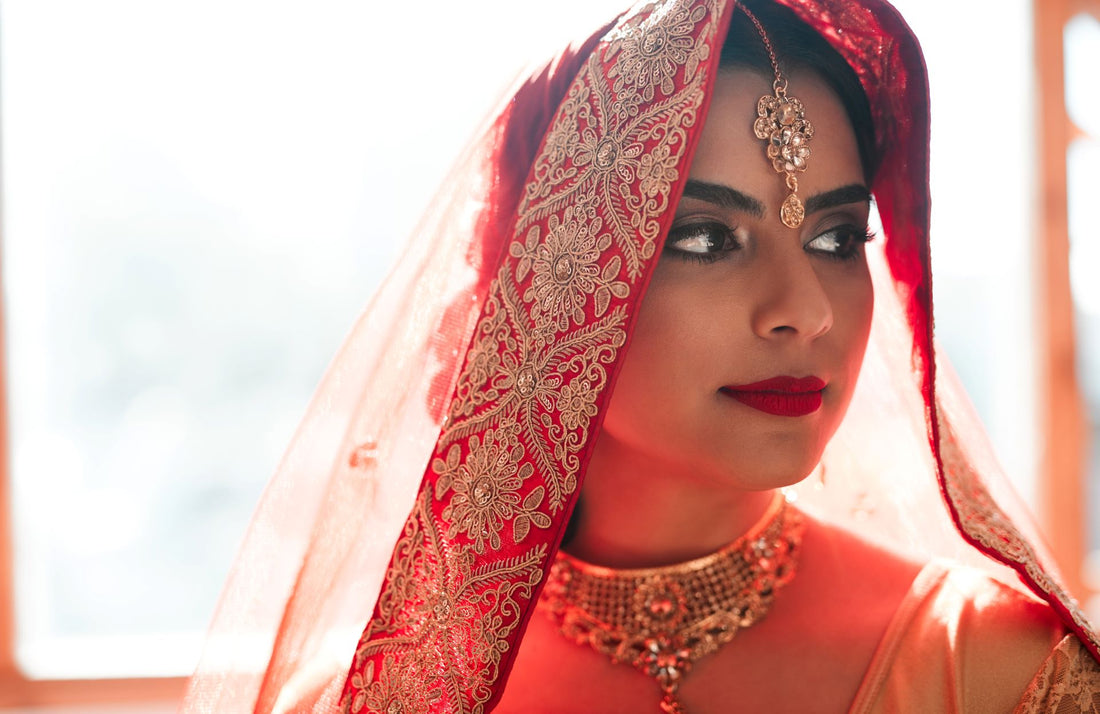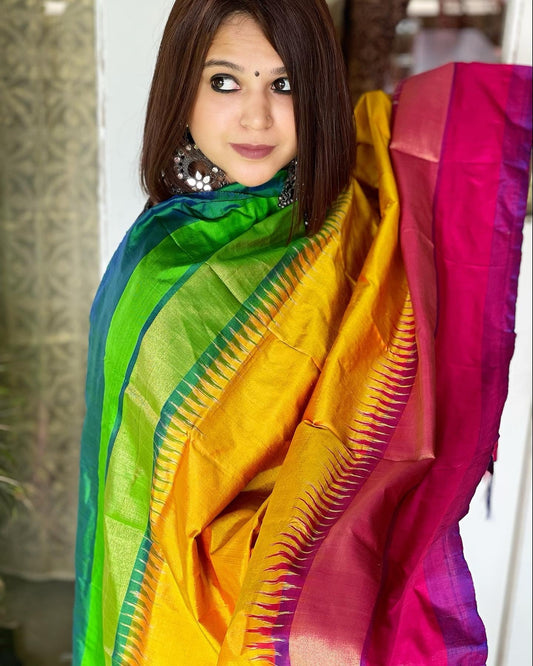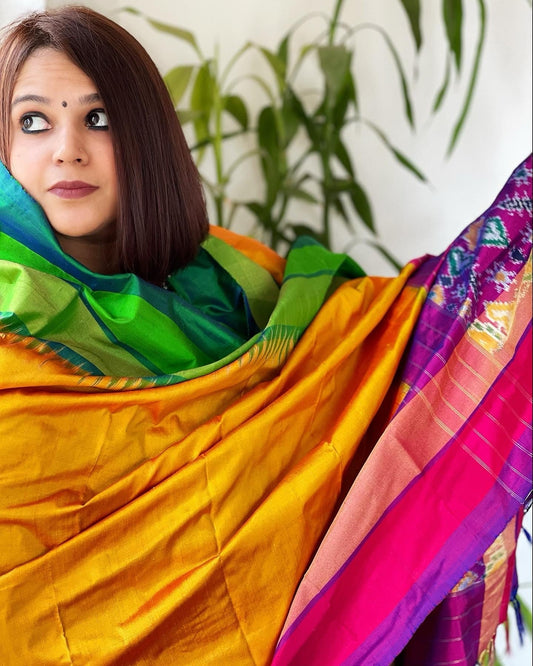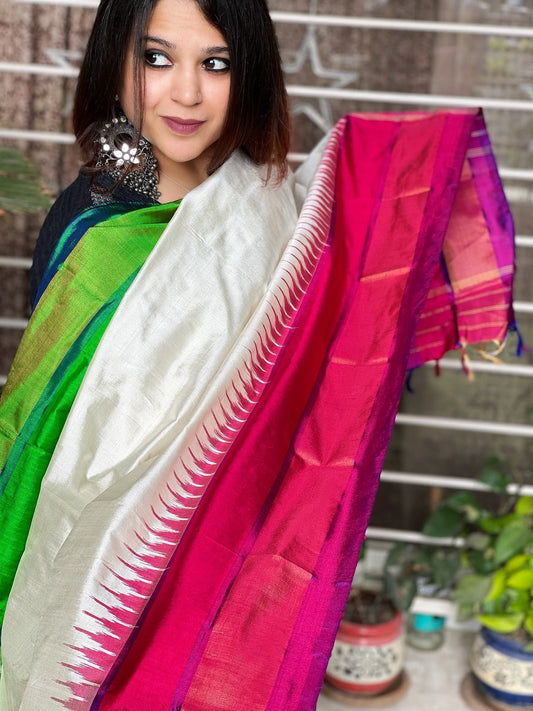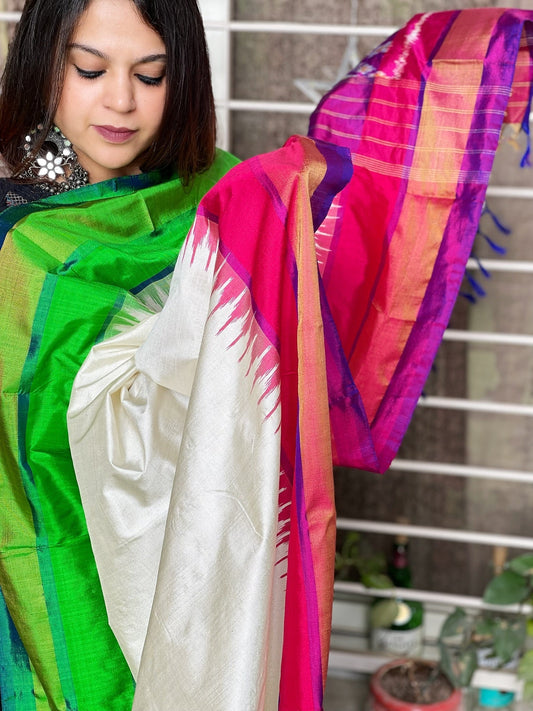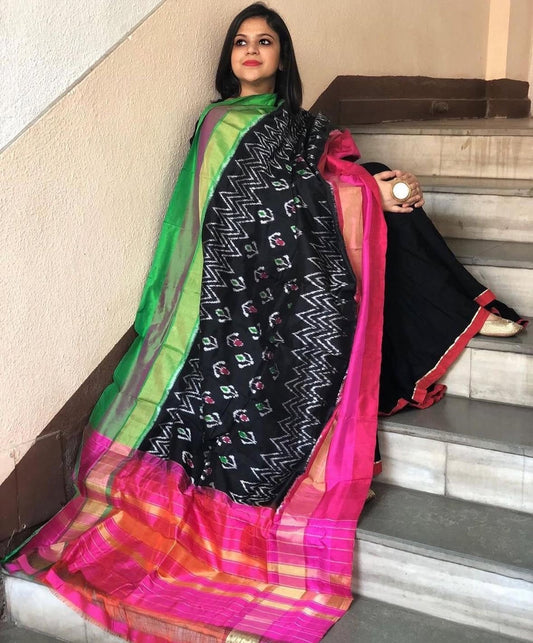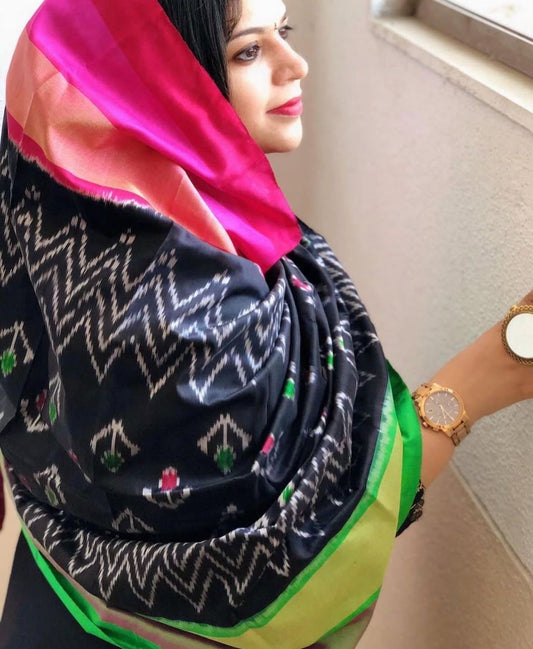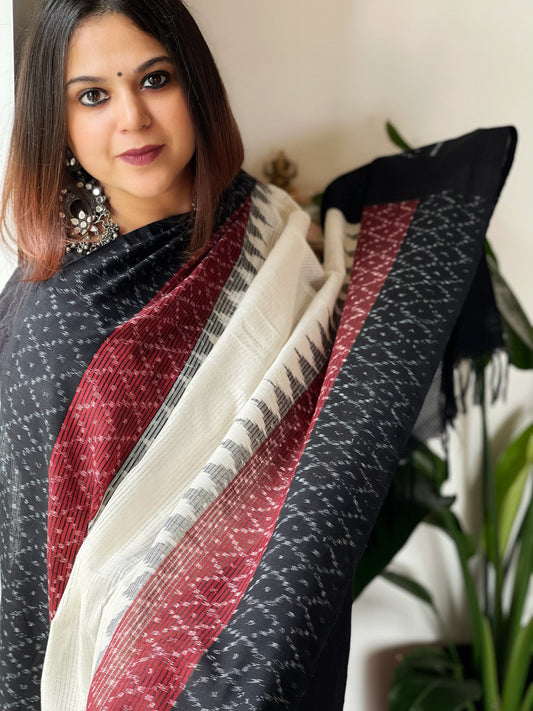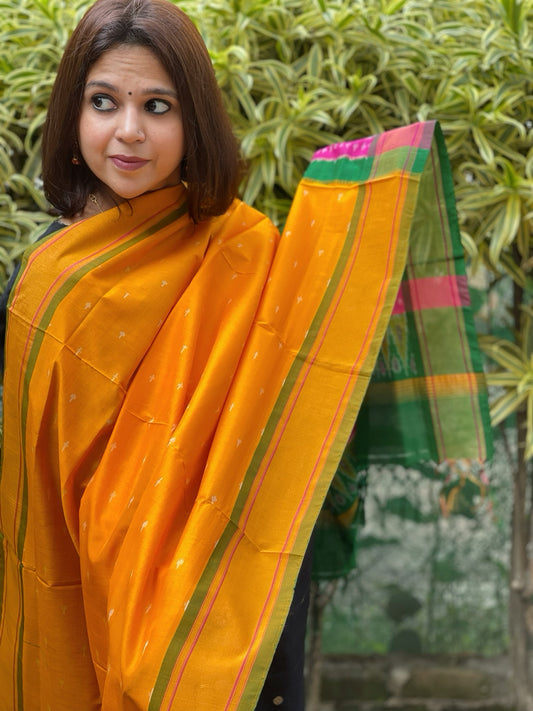A bride's wedding day is one of the most exciting and memorable days of her life. Among the myriad elements that make up a bridal ensemble, the dupatta, especially when used as a veil, holds a place of special significance. Often draped elegantly over the bride’s head and shoulders, the bridal dupatta adds an aura of grace and tradition to the outfit. It beautifully complements the lehenga, creating a look that is both majestic and timeless.
The tradition of the bridal dupatta is deeply rooted in history and culture. It is more than just a piece of cloth; it symbolises modesty, purity, and respect. Various regions in India have their unique ways of incorporating the dupatta into wedding attire, each adding its own cultural meaning and style. This rich heritage makes the bridal dupatta an essential part of the wedding outfit.
Selecting the right dupatta involves more than just picking a beautiful design. Factors like fabric, embroidery, and how it complements the lehenga must be considered to achieve the perfect bridal look. In this article, we will delve into the historical and cultural importance of the bridal dupatta, explore different draping styles, and offer tips on choosing and accessorising the perfect dupatta for your lehenga.
The Historical and Cultural Importance of the Bridal Dupatta
The bridal dupatta has a rich history and cultural significance that extends beyond its role as a beautiful accessory. Its origins go back centuries, deeply embedded in the traditions of various regions across India. Historically, the dupatta symbolised modesty and grace. It was often used by brides to cover their heads and shoulders, reflecting a sense of respect and humility. Over time, this practice has evolved, but the core values remain unchanged.
Different regions have their unique ways of incorporating the dupatta into bridal attire. In North India, for example, the bridal dupatta often features intricate embroideries and heavy embellishments, symbolising wealth and status. In South India, the dupatta, known as the "paatlu," is often woven with gold threads, making it a priceless family heirloom.
The cultural importance of the bridal dupatta is not just limited to its aesthetic appeal. It also holds emotional and symbolic value. During the wedding ceremony, the groom’s family often presents the bride with a dupatta as a sign of acceptance and welcome. This gesture has deep-rooted cultural significance, making the dupatta an integral part of the wedding rituals. Gifting a bridal dupatta is like passing down a piece of heritage and tradition, making it a cherished keepsake for years to come.
Different Styles of Draping the Bridal Dupatta as a Veil
Draping the bridal dupatta as a veil can transform the entire look of the bridal ensemble. There are various styles to choose from, each offering a unique touch to the outfit. Understanding these styles can help you find the perfect drape that complements the lehenga and your personal style.
1. Classic Over-the-Head Drape: This traditional style involves placing the dupatta over the head, with the ends falling gracefully over the shoulders and arms. The front part can be pinned to the shoulder or left loose for a more relaxed look. This drape is perfect for adding an element of elegance and simplicity to the bridal outfit.
2. Side-Swept Veil: For a modern twist, you can drape the dupatta over one shoulder, sweeping it across to the opposite side. This style frames the face beautifully and highlights the intricate designs on the lehenga. It's an elegant way to showcase the dupatta and the bridal attire.
3. Double-Dupatta Style: This involves using two dupattas – one draped over the head and the other styled around the shoulders. The double-dupatta draping adds volume and grandeur to the bridal look, making it a popular choice for brides who want to make a statement.
4. Front-Pinned Drape: In this style, the dupatta is draped from the back and brought over the head, with the front part pinned to the opposite shoulder. This creates a neat and structured look, perfect for brides who prefer a tidy and organised appearance.
Experimenting with these different draping styles can help you find the perfect look for your big day. The right drape not only enhances the bridal attire but also adds a touch of elegance and tradition, making you feel like a queen on your special day.
Choosing the Perfect Dupatta for Your Bridal Lehenga
Selecting the perfect dupatta for your bridal lehenga is crucial for achieving a cohesive and beautiful look. The right dupatta not only enhances your outfit but also complements your personal style and the wedding theme. Here are some key factors to consider when choosing a bridal dupatta.
Fabric Choice
The fabric of the dupatta plays a significant role in determining its overall look and feel. Common choices include silk, chiffon, georgette, and net. Silk dupattas offer a rich and luxurious appearance and are ideal for traditional weddings. Chiffon and georgette are lightweight and drape beautifully, making them great options for a softer, more delicate look. Net dupattas are often embellished with intricate embroidery and can add a touch of glamour to the bridal ensemble.
Colour Coordination
Choosing the right colour is vital for ensuring that your dupatta harmonises with your lehenga. You can either opt for a matching dupatta or a contrasting one, depending on the effect you want to achieve. A matching dupatta maintains a uniform look, while a contrasting dupatta adds a pop of colour and interest. Consider the wedding colour palette, your complexion, and the overall theme when making your choice.
Embroidery and Embellishments
The level of embroidery and embellishment on the dupatta can significantly impact your bridal look. Heavy embroidery with zari, sequins, and stones is perfect for a grand, opulent appearance. On the other hand, light embroidery or delicate lace work is ideal for a more understated, elegant look. Ensure that the embroidery complements the design and details of your lehenga.
Length and Width
The length and width of the dupatta are important for achieving the desired draping style. A longer dupatta allows for more versatile draping options, while a shorter one provides a cleaner, more modern look. Consider how you plan to drape the dupatta when choosing its length and width.
Conclusion
The bridal dupatta is a key element in creating a stunning bridal look. Its historical and cultural importance adds layers of meaning to your wedding attire, while its versatility allows for various stylish draping options. Choosing the perfect dupatta involves careful consideration of fabric, colour, embroidery, and length, ensuring it complements your bridal lehenga seamlessly.
At Masakalee, we understand the importance of finding the perfect bridal dupatta. Our wide selection offers something for every bride, from traditional silk to modern chiffon designs. Explore our collection of handmade dupattas and find the one that will make your special day even more memorable. Visit Masakalee today and add a touch of elegance and tradition to your bridal ensemble.
